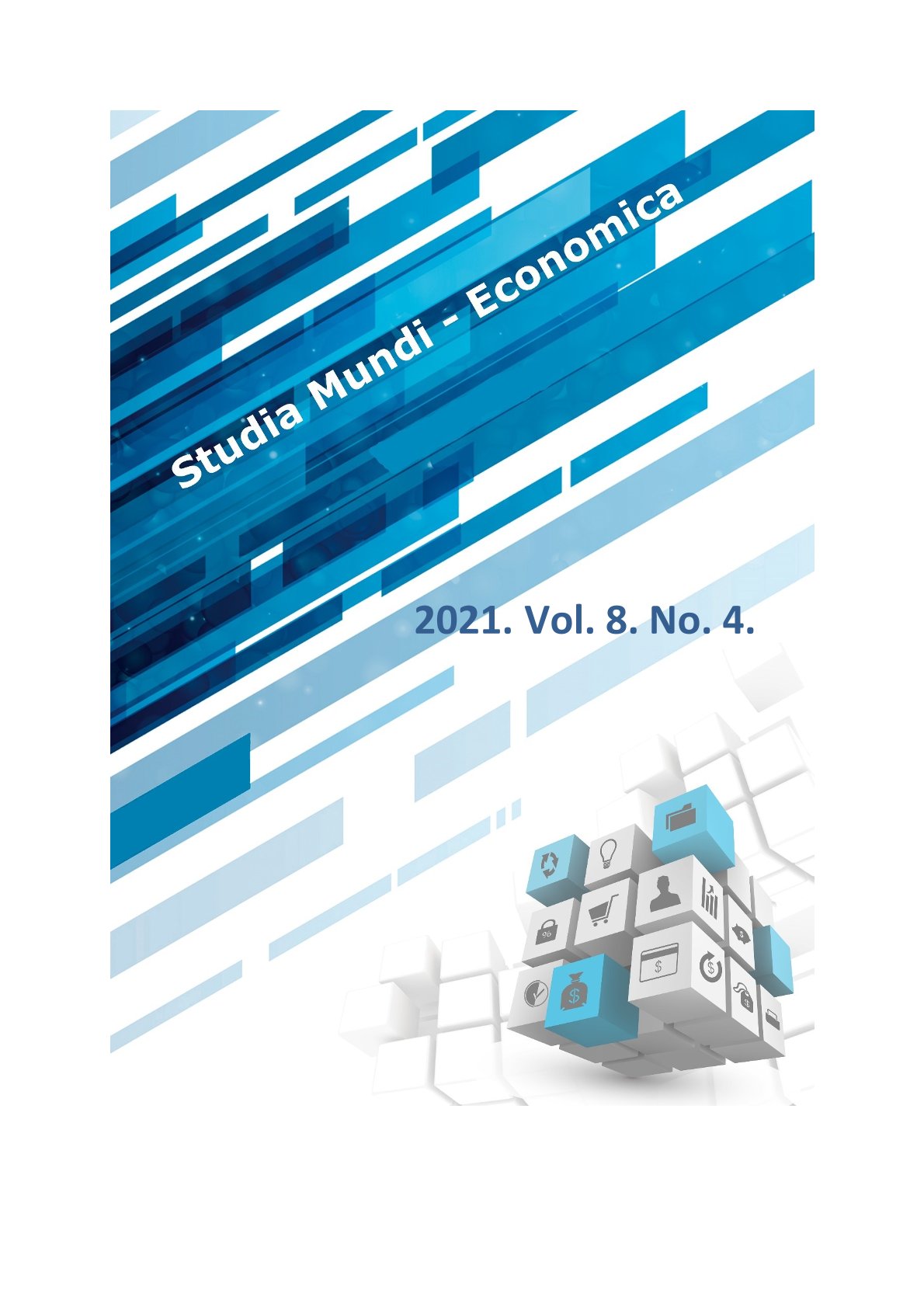Impacts of covid-19 pandemic on Komárom-Esztergom county’s economy via case study of several automotive companies in 2020
DOI:
https://doi.org/10.18531/Studia.Mundi.2021.08.04.83-95Keywords:
COVID-19, autóipar, beszállítói láncok, újrapozicionálás, rugalmasság, kreativitásAbstract
One of the strategic economic sector in Komárom-Esztergom county (KEM) is the automotive industry, which currently faces structural transformation. The possible reasons beyond this one can be the rise of different electric drive systems, emerging labor shortages due to negative demographic trends, and the unfavourable economic impacts caused by “COVID-19” pandemic on production, investments, and supply chain. Due to these difficulties, those processes started to speed up which closely linked to Industry 4.0. global trends including application of process[1]related automation, robotics, digitization, artificial intelligence.
Independently from the coronavirus, an adjustment process has begun among county firms, repositioning their production, rethinking workforce capacity, production chain structure, and inventory policy. Presumably, these contributed to address the challenges as consequences of the negative effects of the COVID-19 epidemic without major shocks. This case study provides an overview on the implemented solutions used by some selected automotive companies (original equipment manufacturer -OEM, first level supplier TIER1 and local, Hungarian[1]owned small and medium-sized enterprises) to overcome the difficulties caused by the epidemic. The economic recession caused by the coronavirus (due to real economic and money market uncertainties) resulted a minor “slow-down” in the county’s economy but flexibility, creativity helped companies to survival.
However, creativity can not be integrated on system level into multisegment that decompose the production processes into operations, operational elements, steps and running them according to strict, internationally standardized protocols. Instead of OEM or TIER1, it would be worthwhile to attract into the county smaller, second level suppliers - the TIER2 - (a detailed list should be made about them). The innovation processes take place in the automotive industry neither at the OEM nor TIER1 units here, but in their second or third round suppliers. Hungarian original ideas can be commercialised in this corporate segment.
References
Áldorfai, György; Józsa, Viktória; Káposzta, József; Nagy, Henrietta; Varga-Nagy, Adrienn (2017): Challenges and development paths of central and Eastern European locations in the globalised world: report on the first international smart communities academy. DETUROPE: CENTRAL EUROPEAN JOURNAL OF TOURISM AND REGIONAL DEVELOPMENT 9:3 pp. 229-232., 4 p. (2017)
Eisenhardt, K.M. (1989): Building theories from case study research. The Academy of Management Review, 1989, Vol. 14, No. 4, pp. 532-550, https://doi.org/10.2307/2585573. European Automobile Manufacturers Association (ACEA 2020): 25 Actions for Successful Restart of EU’s Automotive Sector (2020) pp: 1-10; https://www.acea.auto/files/25_actions_for_successful_restart_EU_automotive_sector.pdf lekérdezés: 2021.07.25.
European Automobile Manufacturers Association (ACEA 2021): The Automobile Industry Pocket Guide 2020-2021 pp: 1-88; https://www.acea.auto/files/ACEA_Pocket_Guide_2020-2021.pdf lekérdezés: 2021.07.26.
Európai Bizottság (2019): A Bizottság közleménye. Az európai zöld megállapodás COM (2019) 640. final
Fekete D. (2017): Európai járműipari térségek gazdasági kormányzási modelljei; Tér és Társadalom 125-142 oldal, 31. évf., 3. szám, 2017, ISSN: 2062-9923 (online); ISSN 0237-7683 (print); doi: https://doi.org/10.17649/TET.31.3.2746
Hausler S., Heineke K, Hensley R, Möller T., Schwedhelm D., and Shen P. (2020): The impact of COVID-19 on future mobility solutions; MacKinsey & Company https://www.mckinsey.com/industries/automotive-and-assembly/our-insights/the impact-of-covid-19-on-future-mobility-solutions 2020.07.09.
HIPA (2019): Automotive Industry in Hungary 2019, pp.1-29; https://hipa.hu/images/dokumentumok/hipa-automotive-ceo-survey-2019.pdflekérdezés: 2021.07.15.
IEA (2020), Global EV Outlook 2020, IEA, Paris https://www.iea.org/reports/global ev-outlook-2020 2021.07.03.
Káposzta, J; Nagy, H. (2015): Status report about the progess of the Visegrad Countries in relation to Europe 2020 targets. EUROPEAN SPATIAL RESEARCH AND POLICY 22:1 pp. 81-99., 19 p. (2015)
Klein, C., J. Høj and G. Machlica (2021), "The impacts of the COVID-19 crisis on the automotive sector in Central and Eastern European Countries", OECD Economics Department Working Papers, No. 1658, OECD Publishing, Paris, https://doi.org/10.1787/a7d40030-en.
Komárom-Esztergom megye Területfejlesztési Koncepció (2030) felülvizsgált 2021. május http://www.kemoh.hu/cikk_kepek/megyefejlesztes/kem-tf-konc-vegleges.pdf lekérdezés 2021. 06.30.
KPMG (2020): Global Automotive Executive Survey. Including COVID-19 insight. https://home.kpmg/id/en/home/insights/2020/06/id-global-automotive-executive survey-2020.html lekérdezés: 2021. 07.29
Központi Statisztikai Hivatal (KSH) (2020): Magyarország 2019, Budapest, ISSN: 1416-2768, Nyilvántartási szám: Y/11165
Losonczi D., Takács O., Demeter K. (2019): Az ipar 4.0 hatásainak nyomában –a magyarországi járműipar elemzése; Közgazdasági Szemle, LXVI. évf. 2019. február (185–218. o.); doi: http://dx.doi.org/10.18414/KSZ .2019.2.185
Lux G. (2017): A külföldi működő tőke által vezérelt iparfejlődési modell és határai Közép-Európában, Tér és Társadalom 31. évf., 1. szám, 2017 doi: https://doi.org/10.17649/TET.31.1.2801
Molnár E., Kozma G., Mészáros M., & Kiss Éva. (2020). Upgrading and the geography of the Hungarian automotive industry in the context of the fourth industrial revolution. Hungarian Geographical Bulletin, 69(2), 137-155. https://doi.org/10.15201/hungeobull.69.2.4
Nagy, H.; Káposzta, J.; Meta, B. (2017): The potentials of rural tourism in developing rural areas in Albania. DETUROPE: CENTRAL EUROPEAN JOURNAL OF TOURISM AND REGIONAL DEVELOPMENT 9:3 pp. 188-206, 19 p. (2017)
Pató, Beáta Sz.G. and Herczeg, Márk (2020): The Effect of the Covid-19 on the Automotive Supply Chains, Studia Universitatis Babes-Bolyai Oeconomica, vol.65, no.2, 2020, pp.1-11., https://doi.org/10.2478/subboec-2020-0006
Roland Berger; Lazard (2020): Global Automotive Supplier Study 2020 https://www.lazard.com/media/451494/global-automotive-supplier-study-2020.pdf lekérdezés: 2021.07.15.
Tóth, T., Káposzta, J. (2021): Succesful management of settlements to boost rural development. EUROPEAN COUNTRYSIDE 13 (2021) 4. pp. 819-833. 15 p. (2021)
Túry G. (2017): Technológiai és munkaszervezési újítások hatása az autóipar térbeli szerveződésére – iparági példa a Volkswagen mintáján; Tér és Társadalom 44-67 oldal, 31. évf., 2. szám, 2017 doi: https://doi.org/10.17649/TET.31.2.284
Downloads
Published
Issue
Section
License
Copyright (c) 2021 Peredy Zoltán, Vörös Mihály, Péli László

This work is licensed under a Creative Commons Attribution-NonCommercial-NoDerivatives 4.0 International License.
A folyóirat Open Access (Gold). Cikkeire a Creative Commons 4.0 standard licenc alábbi típusa vonatkozik: CC-BY-NC-ND-4.0. Ennek értelmében a mű szabadon másolható, terjeszthető, bemutatható és előadható, azonban nem használható fel kereskedelmi célokra (NC), továbbá nem módosítható és nem készíthető belőle átdolgozás, származékos mű (ND). A licenc alapján a szerző vagy a jogosult által meghatározott módon fel kell tüntetni a szerző nevét és a szerzői mű címét (BY).






